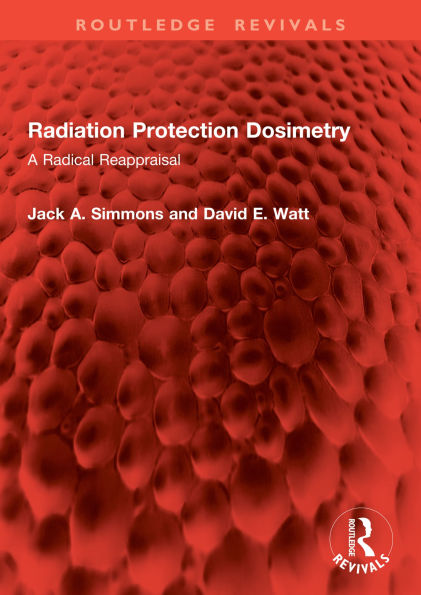Background:
Physicist Jack Simmons’ research led him to develop a new paradigm to quantify radiation effects. He questioned both the International Commission on Radiation Units and Measurements (ICRU) and the International Commission on Radiological Protection (ICRP), which had established the definition and measurement of radiation dose on physical principles. Jack Simmons maintained that measurement of radiation dose should be based on the biological effects of radiation at the DNA level and his proposed model for radiation protection dosimetry was based primarily on radiation fluence rather than dose.
The book:
Radiation Protection Dosimetry: A Radical Reappraisal was originally published in 1999. It was the first major effort to present an alternative approach to previous radiation protection dosimetry and the new bio-effectiveness model marked a new approach which challenged traditional thinking. The book analyses the defects and limitation of the traditional radiation protection paradigm, recording the history of its evolution, primarily the roles of the ICRP and the ICRU and documents scientific lapses. A detailed description of the various radiobiological models to describe the health effects of radiation is also presented.
Lasting Impact:
The book made waves in radiation protection circles as at that time all radiation protection standards were based on epidemiological studies, mainly relying on data from the Nagasaki and Hiroshima bomb survivors.
However, in 2020 the ICRU and the ICRP published an alternative approach to their definition of operational radiation protection quantities that went some of the way towards concurring with Jack Simmons’ views and proposals set out in the book. For this reason the decision was made to reissue this important work.
Background:
Physicist Jack Simmons’ research led him to develop a new paradigm to quantify radiation effects. He questioned both the International Commission on Radiation Units and Measurements (ICRU) and the International Commission on Radiological Protection (ICRP), which had established the definition and measurement of radiation dose on physical principles. Jack Simmons maintained that measurement of radiation dose should be based on the biological effects of radiation at the DNA level and his proposed model for radiation protection dosimetry was based primarily on radiation fluence rather than dose.
The book:
Radiation Protection Dosimetry: A Radical Reappraisal was originally published in 1999. It was the first major effort to present an alternative approach to previous radiation protection dosimetry and the new bio-effectiveness model marked a new approach which challenged traditional thinking. The book analyses the defects and limitation of the traditional radiation protection paradigm, recording the history of its evolution, primarily the roles of the ICRP and the ICRU and documents scientific lapses. A detailed description of the various radiobiological models to describe the health effects of radiation is also presented.
Lasting Impact:
The book made waves in radiation protection circles as at that time all radiation protection standards were based on epidemiological studies, mainly relying on data from the Nagasaki and Hiroshima bomb survivors.
However, in 2020 the ICRU and the ICRP published an alternative approach to their definition of operational radiation protection quantities that went some of the way towards concurring with Jack Simmons’ views and proposals set out in the book. For this reason the decision was made to reissue this important work.

Radiation Protection Dosimetry: A Radical Reappraisal
160
Radiation Protection Dosimetry: A Radical Reappraisal
160Related collections and offers

Product Details
| ISBN-13: | 9781040399651 |
|---|---|
| Publisher: | CRC Press |
| Publication date: | 09/01/2025 |
| Series: | Routledge Revivals |
| Sold by: | Barnes & Noble |
| Format: | eBook |
| Pages: | 160 |
| File size: | 3 MB |
